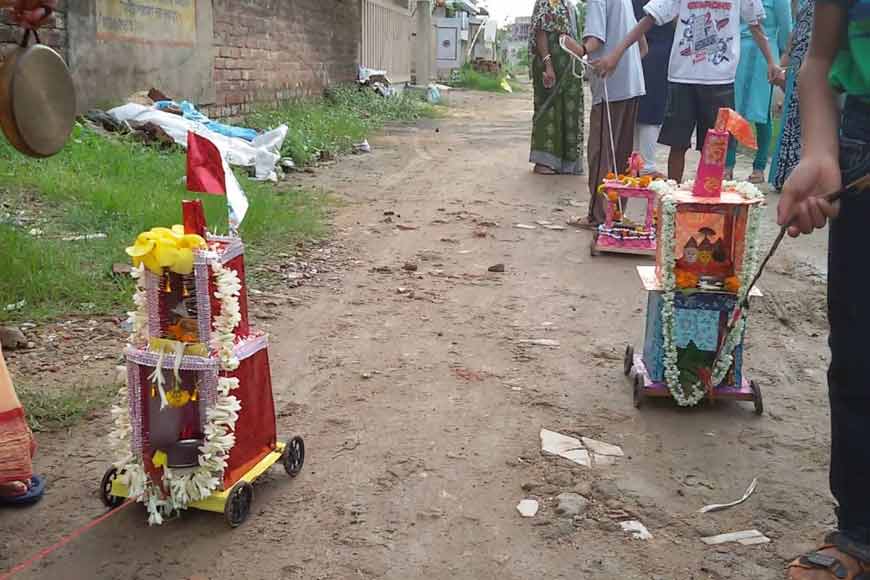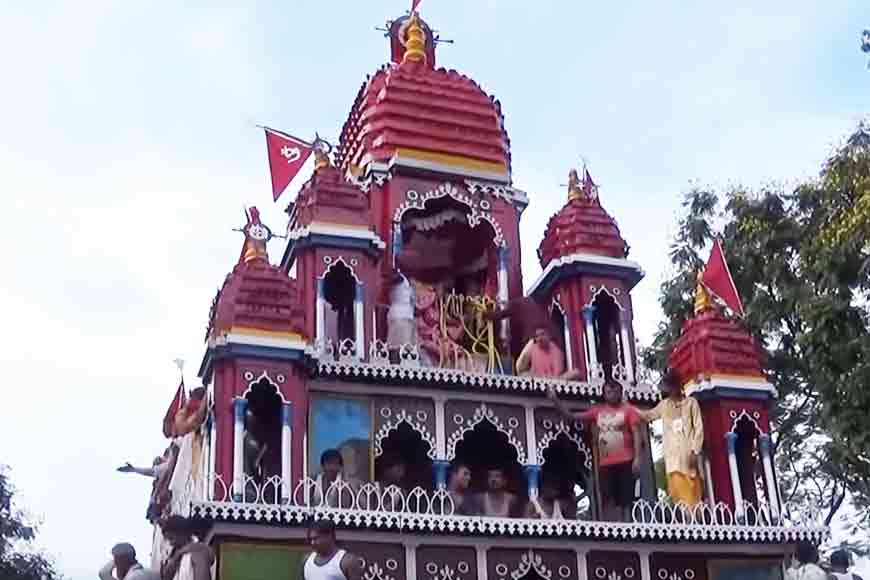Rath Yatra: A Festival in Every Para of Bengal – GetBengal story

It is that sacred time of year when Lord Jagannath, the beloved deity of Puri, leaves his sanctum and embarks on his annual journey to his aunt’s abode. Accompanied by his divine siblings—Subhadra and Balabhadra—he ascends his grand chariot, greeted by oceans of devotees who pull the sacred ropes with reverence and joy.
In Bengal, even though the scale may be smaller than in Puri, the emotion is just as grand. In the lanes and courtyards of West Bengal, Rath Yatra is not merely a religious observance rather, it is a living memory passed down through families, a celebration that blends devotion with community, nostalgia with festivity.

In every village rath and every neighbourhood kirtan, one finds echoes of childhood laughter, the reverence of elders, and the quiet tears of those remembering those no longer by their side. Rath Yatra here is emotion in motion.
Large wooden raths are constructed with intricate carvings and bright colours, often weeks in advance. The idols of Jagannath, Balabhadra (Balaram), and Subhadra are placed on the chariots with rituals steeped in devotion. Both children and elders pull the ropes because they think it will bring luck and blessings.

The Rath Yatra is celebrated with historical grandeur in districts like Mahesh in Serampore. Thousands of pilgrims and tourists attend the Mahesh Rath Yatra every year, which is thought to be the second-oldest in India (having started in 1396). In a display of solidarity and devotion, a huge rath that is almost fifty feet tall rolls down the streets.
In Kolkata’s neighbourhoods, community clubs and temples organise localized versions of the festival. Children decorate small raths with flowers and bells, tugging them along the lanes in playful mimicry of the divine event. Rather mela, Sweet stalls and kirtan mandalis make the day a festive carnival. Among the most heartwarming sights during Rath Yatra in Bengal are the children — their eyes wide with wonder, their hands sticky from holding jilipi (jalebi) and crunchy papor vaja (fried papad), the aroma of fried treats clinging to the humid air. They roam through the rather mela — the fair that springs to life beside the chariot procession — tugging at their parents, pointing at wooden toys, clay flutes, spinning tops, and sometimes bursting into tears when denied one more trinket. Rath Yatra in Bengal is not just a religious festival, it is a social thread that binds people across ages and classes.
Whether in a quiet village or a noisy city lane, the sight of the rath being pulled, the smell of fresh bhog, and the sound of joyous kirtan transform ordinary spaces into divine grounds. In every tug of the chariot’s rope lies a story of faith, community, and the timeless rhythm of tradition.











